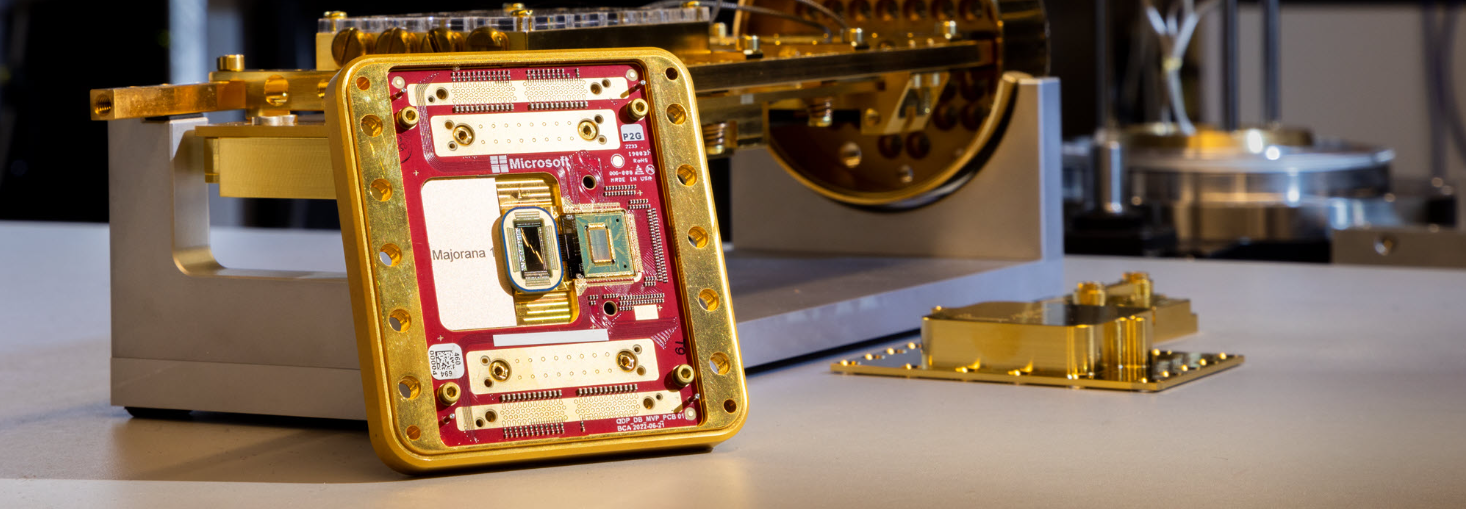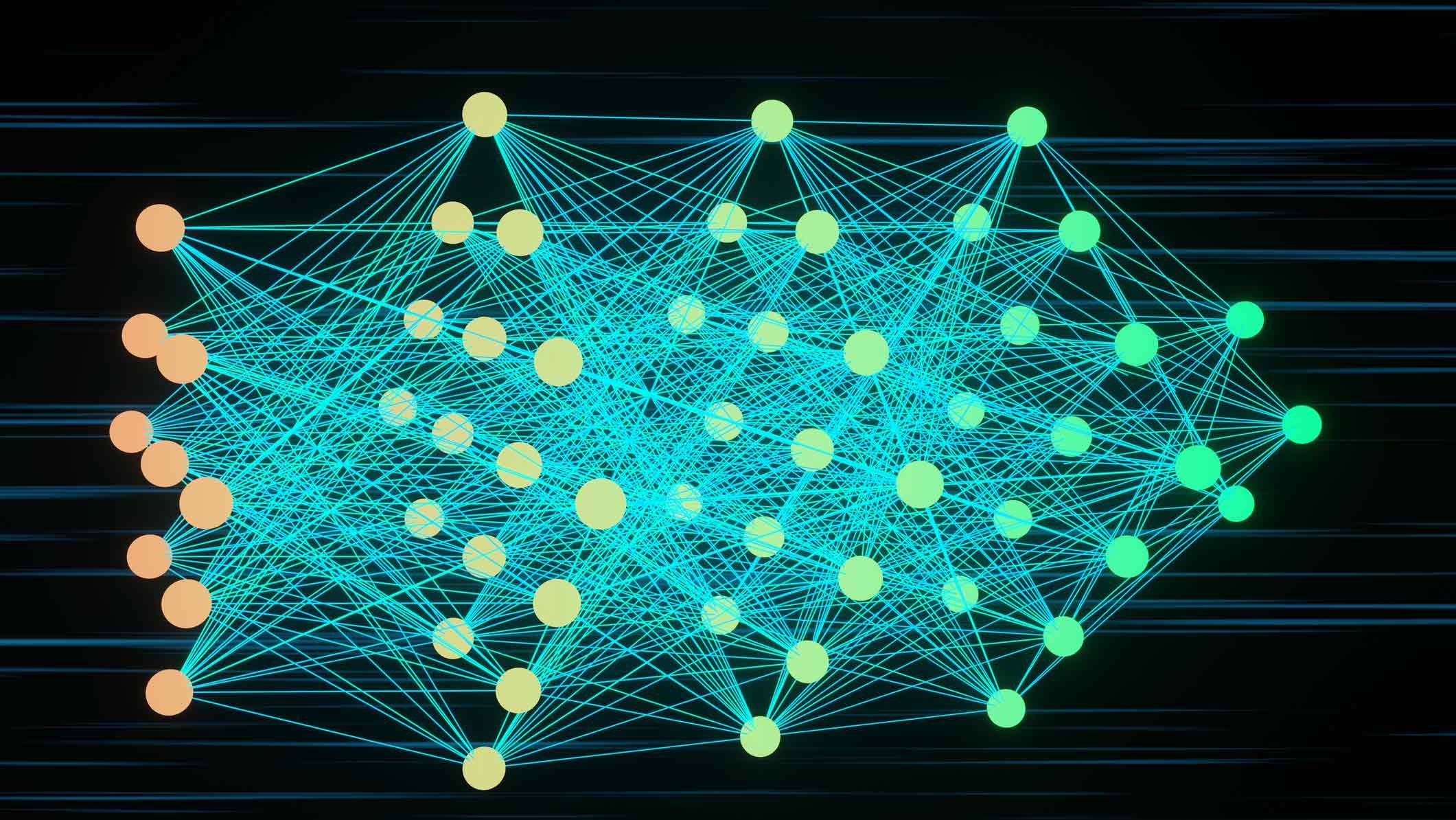
Topological quantum processor marks breakthrough in computing
In a leap forward for quantum computing, a Microsoft team led by UC Santa Barbara physicists on Wednesday unveiled an eight-qubit topological quantum processor, the first of its kind. The chip, built as a proof-of-concept for the scientists’ design, opens the door to the development of the long-awaited topological quantum computer.
“We’ve got a bunch of stuff that we’ve been keeping under wraps that we’re dropping all at once now,” said Microsoft Station Q Director Chetan Nayak, a professor of physics at UCSB and a Technical Fellow for Quantum Hardware at Microsoft. The chip was revealed at Station Q’s annual conference in Santa Barbara, and accompanies a paper published in the journal Nature, authored by Station Q, their Microsoft teammates and a host of collaborators that presents the research team’s measurements of these new qubits.
“We have created a new state of matter, called a topological superconductor,” Nayak explained. This phase of matter hosts exotic boundaries called Majorana zero modes (MZMs) that are useful for quantum computing, he explained. Results of rigorous simulation and testing of their heterostructure devices are consistent with the observation of such states. “It shows that we can do it, do it fast and do it accurately,” he said.
The researchers also followed up their Nature result with a paper currently in preprint outlining a roadmap for scaling up their technology into a fully functional topological quantum computer.
Majorana magic
The promise of quantum computing lies in the speed and power of its computations, expected to outperform even the most advanced classical supercomputer. All of this rests on the qubit, the quantum computing version of the bit, the fundamental unit of information for classical computers. While classical bits exist only in a state of either zero or one, qubits can represent zero, one and combinations in between.
Qubits can come in different forms, utilizing the quantum behaviors of trapped ions, for instance, or photons. Topological systems are based on a different type of particle called an anyon, a type of “quasiparticle” that emerges as the result of the correlated states of many interacting particles at the surface of a material, in this case a superconducting nanowire.
What makes topological quantum computing such a hot field of research is that it promises more stability and robustness to error than other quantum computing systems. Qubits can be prone to error, requiring quantum computer builders to account for it by, for instance, building more qubits to error-correct.
“A complementary approach is to build in the error correction at the hardware level,” Nayak said. Because quantum information is distributed and stored over a physical system rather than in individual particles or atoms, he explained, the information being handled by the topological qubits is less likely to lose its coherence, resulting in a more fault-tolerant system.
But not just any quasiparticle will do. For topological quantum computing, Majorana particles — more specifically Majorana zero modes — are the tool of choice. Named for Italian physicist Ettore Majorana, who predicted them in 1937, these particles are special in that they are their own antiparticles, and are able to retain a “memory” of their relative positions over time. By “braiding” them — moving them physically around each other — it is possible to create a more robust quantum logic.
The researchers realized these MZMs through the placement of an indium arsenide semiconductor nanowire very close to an aluminum superconductor. Under the right conditions, the semiconducting wire becomes superconducting and enters a topological phase. MZMs emerge at the ends of the wire, while the rest of the wire has an energy gap. “The larger this topological gap,” Nayak pointed out, “the more robust the topological phase is.
“The surprising thing is, when you make the gap larger, not only does it become more robust, but you potentially go faster and maybe shrink everything a little bit so you’re not paying for your fidelity with size.”
At eight qubits, the researchers’ topological processor is a mere embryo in the world of quantum computers, but marks a major milestone in the scientists’ decades-long quest to develop a topological quantum computer. Along the way, Nayak said, there have been fruitful partnerships between Station Q and the university, especially in the realm of creating the materials that host topological quantum behaviors.
“Chris Palmstrøm has been a collaborator at times, and he has made important advances in these kinds of materials,” he said of the electronic materials expert, while materials scientist Susanne Stemmer contributed her expertise with fabrication processes. Station Q has also hired many students to its team, and importantly, Nayak added, the semiconductor heterostructure concept is born from the Nobel Prize-winning ideas of the late Herb Kroemer, who was a professor in the Department of Electrical and Computer Engineering.
“There’s a long history of expertise and talent at UCSB in these kinds of material combinations, and on this really cutting-edge materials science that opens up new types of physics we can do.”




